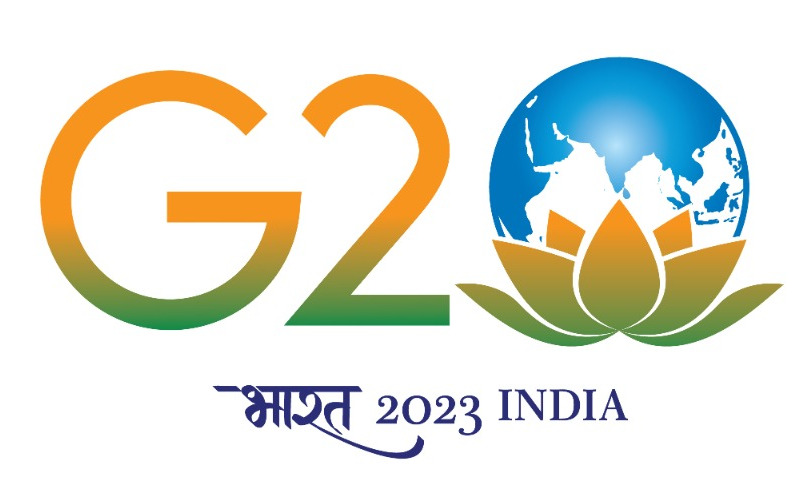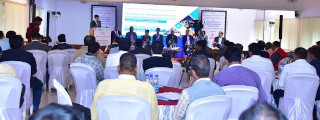Brief Overview of Iron & Steel Sector
India is currently the world’s second-largest steel producer, and second-largest steel consumer (WSA, 2020a). As with any industrializing economy, the steel sector is of vital importance to India, contributing around 2% to the country’s GDP and employing around 2.5 million people in the steel and related sectors (MoS, 2020a). The Indian Iron and Steel segment offers a product mix that includes hot rolled parallel flange beams, columns rails, plates, coils, wire rods, and continuously cast products such as billets, blooms, beams, blanks, rounds, slabs, metallic, and ferroalloys. In FY 2018, India’s crude steel production crossed 100 MT for the first time, reaching 106.5 MT and registering a 4.5% year-on-year growth rate, and becoming the 2nd largest producer of steel in the world after China. India was also the largest producer of Sponge Iron (Direct Reduce Iron or DRI) in the world in 2020.
In 2017, the Ministry of Steel (MoS) launched the National Steel Policy (NSP), which laid down the broad roadmap for encouraging long term growth for the Indian Steel Industry, both on demand and supply sides, by 2030-31 including to increase India’s teel making capacity to 300 Mt by 2030. This policy also encompasses targets to reduce energy consumption per tonne of steel, through adopting the latest energy efficiency measures.India is also among the largest iron ore producers in the world, ranking 4th globally. Iron ore is a key input product for manufacturing steel and primary iron. More than 85% of the iron ore reserves in the country are of medium or high-grade and are directly used in blast furnace and Direct Reduced Iron (DRI) plants, in the form of sized lumps, sinters, or pellets.
Manufacturing Process & Energy Consumption
The basic process of manufacturing of iron & steel is carried out in two stages, sponge and pir iron through the reduction followed by production of crude steel. Secondary process involves production of merchant products from the crude steel. The steel industry in India is relatively heterogeneous compared to other countries, with a wide range of different sized facilities in the primary and secondary steelmaking sectors. There are also several different technologies currently being used, including the Blast Furnace – Basic Oxygen Furnace (BF-BOF), coal-based Direct Reduction (DR), gas-based DR, Electric Induction Furnace (EIF) and Electric Arc Furnace (EAF). BOF technology dominates a growing share of steel production (45%), being the preferred technology for most new capacity, with EAF (28%) and EIF (27%) taking an almost equal share of the remainder of the market.
BF-BOF process is primarily used by integrated steel plants. After the BF-BOF process, molten steel is controlled to a target composition and temperature and is then cast by continuous casting machine to produce slabs and billets. These castings are rolled to the required dimensions by the rolling mill to produce the steel products. Sponge iron is produced by DRI process. Originally, natural gas based reformation technology used to be used in the DRI process. However, technology for using coal has since been developed and most of the Indian sponge iron units use coal both as fuel and reducing agent. Direct reduced iron along with steel scrap is then melted in an electric arc furnace (EAF) to produce molten steel and subsequent products.
Fig: Process diagram of a typical Integrated Steel Plant(Source)
The energy used in steel making is classified under primary and secondary sources. Energy purchased from outside such as coal, coke, electricity, gas etc. is classified as primary resource whereas recovered energy such as blast furnace and coke oven gas, waste heat from furnaces is classified as secondary resources. From the energy conservation perspective, major emphasis has always been increased use of secondary resources, such as recent spur in investment in WHR based power plants in large number of sponge iron making plants. Iron making by far the most energy intensive process accounting for close to 60 to 70% of total energy consumption. Typical fuel mix involves a) Coal (83.5%) b) Oil (2%) c) Gas (1.5%) d) Grid Electricity (13%).
(Source)
PAT Scheme for Iron & Steel Sector
The Iron & Steel sector is one of the designated sectors covered under the BEE’s PAT scheme. The modified threshold limit for the Iron & Steel Sector is 20,000 metric tonnes of oil equivalent of energy consumption per annum. PAT Cycles wise number of DCs, their total energy consumption (Million TOE) and energy savings targets (Million TOE) of the Iron and Steel Sector are presented below:
| Cycles | No. of DCs | Total Energy Consumption (Million TOE) |
Energy Saving Targets (Million TOE) |
| PAT Cycle I | 67 | 25.32 | 2.1 |
| PAT Cycle II | 71 | 40.44 | 2.283 |
| PAT Cycle III | 29 | 7.648 | 0.457 |
| PAT Cycle IV | 35 | 3.334 | 0.1934 |
| PAT Cycle V | 23 | 2.8255 | 0.1687 |
| PAT Cycle VI | 5 | 0.515 | 0.031 |
| PAT Cycle VII | 134 | 60.06 | 2.729 |
| PAT Cycle VIII | 66 | 3.71 | 0.2438 |
Energy Savings Achievement in the Iron & Steel Sector under PAT Cycle I and PAT Cycle II are 2.1Million TOE and 2.921 Million TOE respectively
Best Practices Adopted by Iron & Steel Sector
Iron & Steel industries have adopted the following key operational best practices and technologies as part of their Industrial Energy Efficiency and Decarbonisation (IEED) measures
- Installation of Top Recovery Turbine and Pulverized Coal Injection in Blast Furnace.
- Commissioning of LD Gas Recovery Plant in Steel melting shop.
- Use of Hydrogen in steel making reheating furnaces.
- Use of Plastics to replace PCI in Blast Furnaces.
- Direct rolling in mini steel plants.
- Hot charging of DRI in EAF.
Details of Line Ministries
Details of Specialised Organization / Research Institute
- Research & Development Centre for Iron & Steel (RDCIS) SAIL, Ranchi
- Steel Research & Technology Mission of India (SRTMI), New Delhi
- Centre of Excellence in Steel Technology (COEST), IIT Mumbai
- National Institute of Secondary Steel Technology (NISST), Punjab
Details of Industrial Associations
List of Key Technologies
- 100% electrolytic hydrogen based DRI.
- Waste Heat Recovery in Sinter Plat/ DRI.
- Hydrogen enrichment.
- Hisarna with 80-90% capture CCS.
- Increasing share of production from the secondary sector through scrap recycling.
- Installation of Top Recovery Turbine.
- Pulverized Coal Injection in Blast Furnace.
- Coke Dry Quenching
- Regenerative/recuperative burner for reheating furnace
List of EE and Decarbonisation Technologies and Solutions (National & International)



